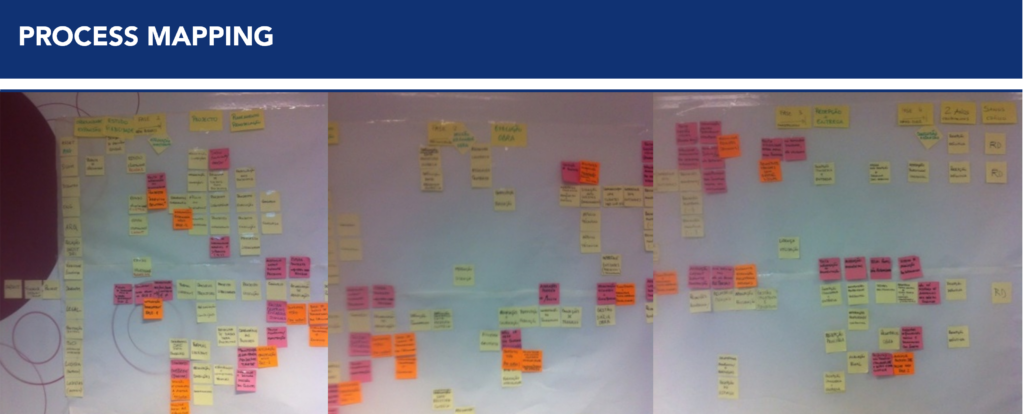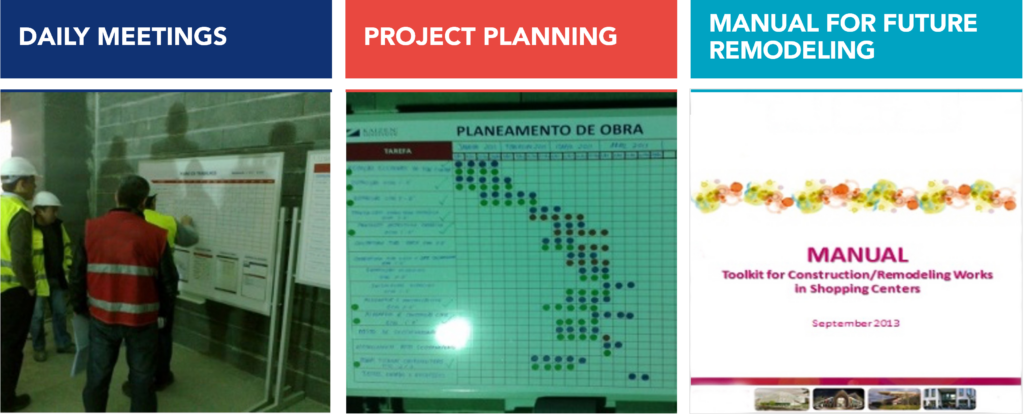The Company
This company operates in the real estate sector and devises innovative investment strategies across the globe, encompassing everything from commercial spaces to residential and public projects. Its activities include project management and turnkey solutions delivery, positioning it as a leader in the industry. It owns several shopping centers and manages and markets others, with a portfolio of over a hundred assets.
The company has been committed to continuous improvement and operational efficiency for many years. In this context, this project was initiated to improve the processes of remodeling the spaces under its umbrella.
The Challenge
Significant gaps were identified during the analysis of the opening and remodeling processes. Among them, there was no clear definition of the stakeholders’ responsibilities, regulatory failures in the interaction between teams, poor standardization across brands and countries, failures in procedures and specifications, and little process control.
The challenge presented to the team was to improve project management for this type. The established goals were ambitious and aimed at optimizing processes globally, seeking to:
- Reduce the time spent in opening and remodeling stores: Operational efficiency and agility among stakeholders;
- Minimize the physical impact on store operations: Maintain the continuity of commercial activities during the process;
- Mitigate the commercial impact on customers: Prioritize customer satisfaction throughout the opening and remodeling process.
- Eliminate process extra costs: Aiming for more effective and guided financial management;
- Improve the quality of opening and remodeling: Ensuring high standards in all operational aspects.
This challenge formed a response to the identified gaps and a pursuit of excellence, efficiency, and satisfaction, reaffirming the company’s commitment to constant innovation in business and the evolution of its operational practices.
The Solution
The identification and in-depth analysis of issues encountered in the opening and remodeling process revealed significant challenges, such as multiple changes to the work layout, delays, unproductive meetings, emergencies arising from delays in the feasibility analysis, and budget deviations.

Root Causes
The root causes of these problems were identified:
- Late involvement of the development team, which impacted critical decision-making;
- No Visual Management and 5S – workplace organization – on-site, contributing to poor organization and inefficiency;
- Non-standardized meetings, compromising communication effectiveness;
- High feasibility time resulting in emergencies in the planning phase;
- Projects not contemplating SHE (Safety, Health, and Environment) standards leading to late and costly adjustments.
Countermeasures
The solution involved implementing practical measures to act upon the improvement opportunities:
- Daily and planning on-site meetings: Fostering effective communication and agile decisions;
- Weekly on-site audits (5S, SHE): Promoting organization and safety in the work environment;
- Development team involved upstream: Ensuring early participation of the development department;
- Redesigning the supplier evaluation system: Ensuring more efficient and streamlined partnerships;
- Developing a manual for all future remodels: Developing explicit norms and procedures to ensure consistency and effectiveness in future projects.

This integrated approach aimed to resolve immediate problems and establish solid foundations for continuous improvement, reflecting the company’s commitment to operational excellence and world-class results delivery.
Results
Implementing the proposed solutions significantly impacted opening and remodeling, resulting in tangible benefits corresponding to the company’s strategic objectives.
One of the most notable achievements was meeting the established deadlines, a substantial change in operational efficiency. This result not only optimized time management but also minimized the negative impact experienced by the customer during the remodeling process. In addition, the company achieved a significant cost reduction of 800,000 euros.
These positive results – stemming from implementing the proposed strategies – reinforce the effectiveness of the changes promoted by the company. This pilot project also had a positive impact on all future remodels. In addition to improving operational efficiency, the benefits achieved are aligned with the company’s vision, demonstrating its ongoing commitment to innovation, excellence, and delivering value to customers and stakeholders.
See more on Capital Project Excellence
Find out more about improving this business area
